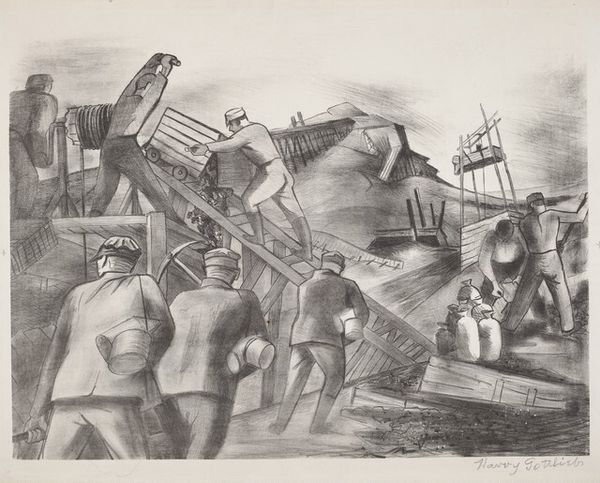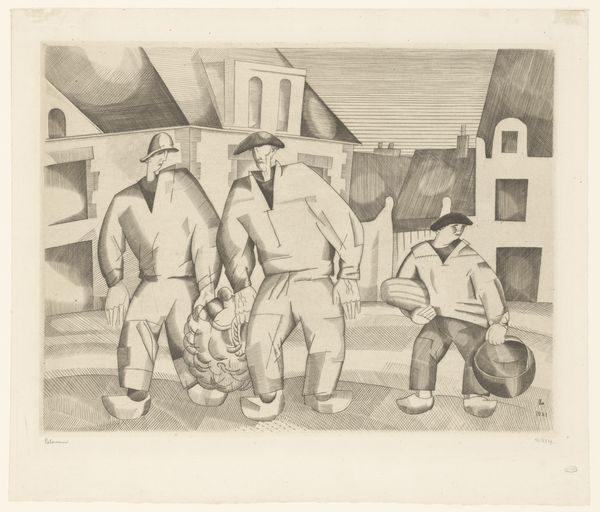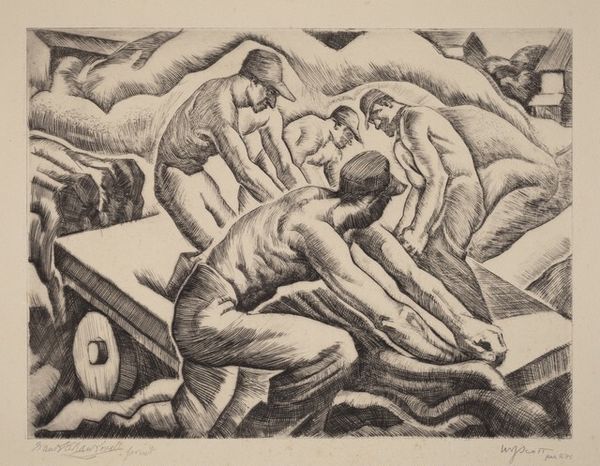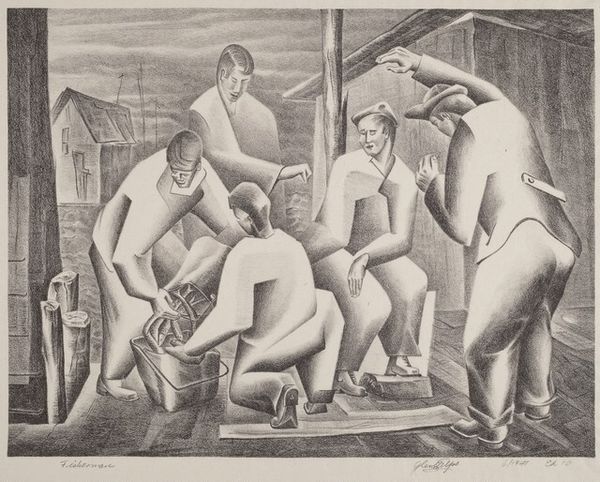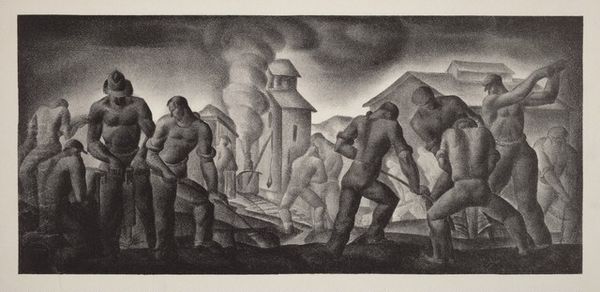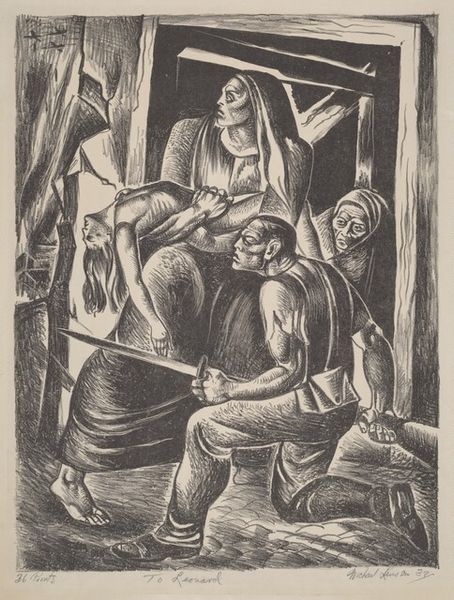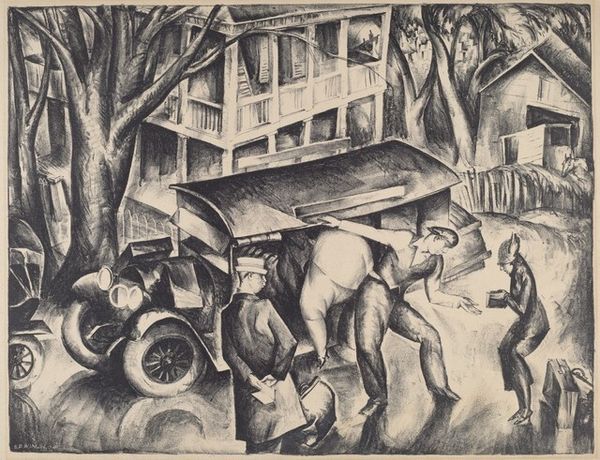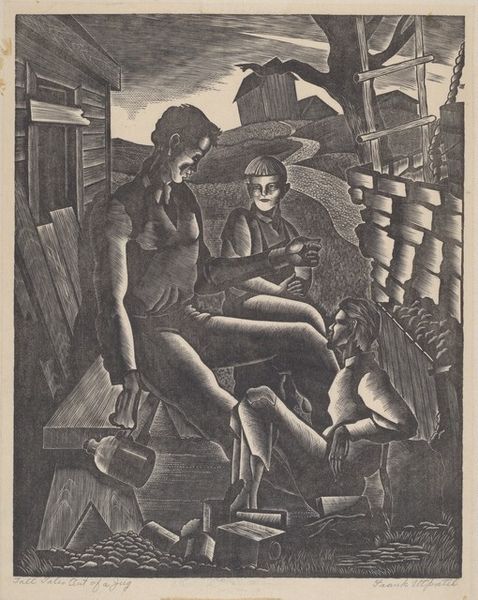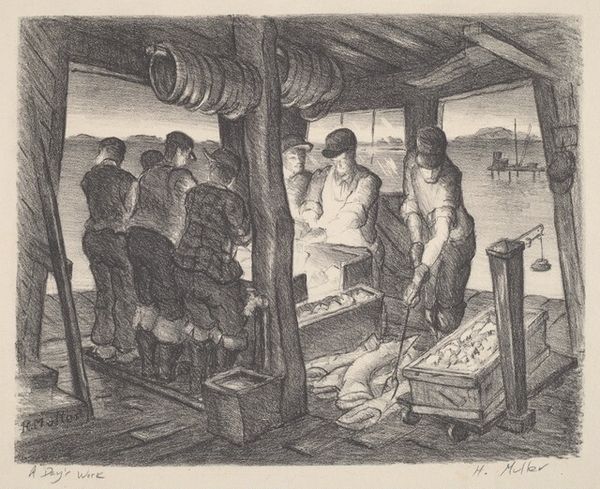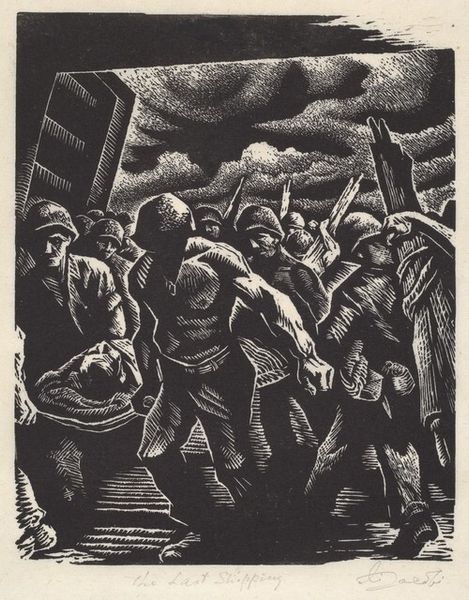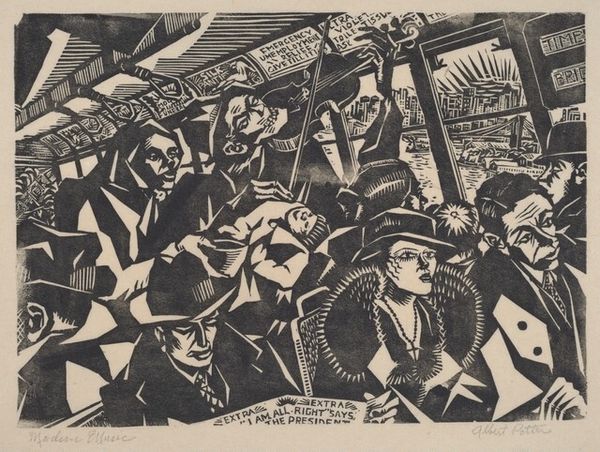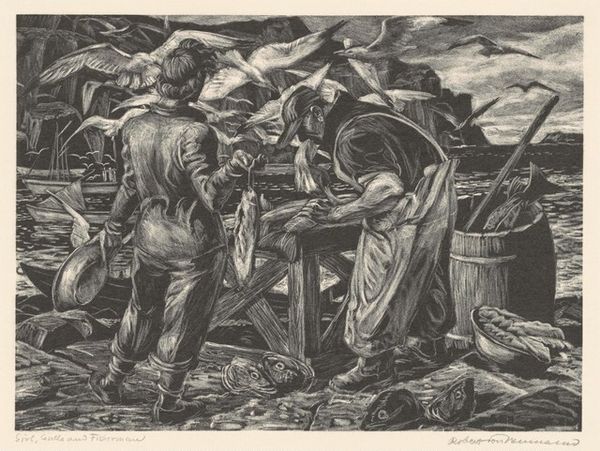
drawing, print, graphite
#
pencil drawn
#
drawing
# print
#
pencil drawing
#
graphite
#
cityscape
#
genre-painting
#
realism
Dimensions: Image: 222 x 290 mm Sheet: 268 x 405 mm
Copyright: National Gallery of Art: CC0 1.0
Curator: This is Norman Barr's "Fish Market," a graphite print created in 1939. It offers a glimpse into a slice of working-class life during the late Depression era. Editor: It’s immediately striking. The stark contrasts, the almost architectural lines… it evokes a sense of sturdy industry but also a kind of muted melancholy. There's a solemn feel to these men and their labor. Curator: Absolutely. Barr, in 1939, likely aimed to portray honest labor amidst widespread economic hardship. This print, being a multiple, could reach a broader audience, embedding working-class realities in the public consciousness. The print medium democratizes access. Editor: The figures certainly stand out as emblems of their roles, but they seem anonymous, too. Look at the man with the pipe – he exudes authority, but also a resignation. The smoke curling from his pipe hints at something beyond the immediate, perhaps anxieties related to sustenance. Is this about their actual labor, or the threat to their existence because of lack of work? Curator: I think both are undeniably intertwined. Fish markets often represent both abundance and vulnerability. Barr's emphasis on these stoic figures amidst tools and boxes resonates with realism while pointing to the precariousness of working life. These men selling the "catch of the day" reflects our shared understanding that something as reliable as food can be lost. Editor: The shadows accentuate that precarity. They are solid, imposing… almost looming, hinting at forces that impact these men. And I wonder about the upward crane. Its arms extending outward with its payload dangling is an echo of other cruciform images throughout the ages of humankind. The daily work is a ritual. Curator: Interesting reading. It may also signal an emerging industrial age intruding into traditional, agrarian practices. Either reading positions labor between established traditions and shifting societal realities. It encapsulates the era's tensions. Editor: In its simplicity and starkness, "Fish Market" feels particularly resonant today. We're always looking at images that tell stories of shared past. Curator: Indeed, Norman Barr provides a valuable depiction of a common yet challenging vocation. It is art with purpose beyond mere representation. Editor: I agree. The image leaves you reflecting on not only the workers and their toil but on the symbols, shared work, history, sustenance and memory.
Comments
No comments
Be the first to comment and join the conversation on the ultimate creative platform.
